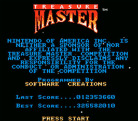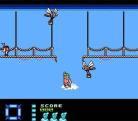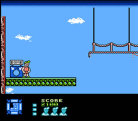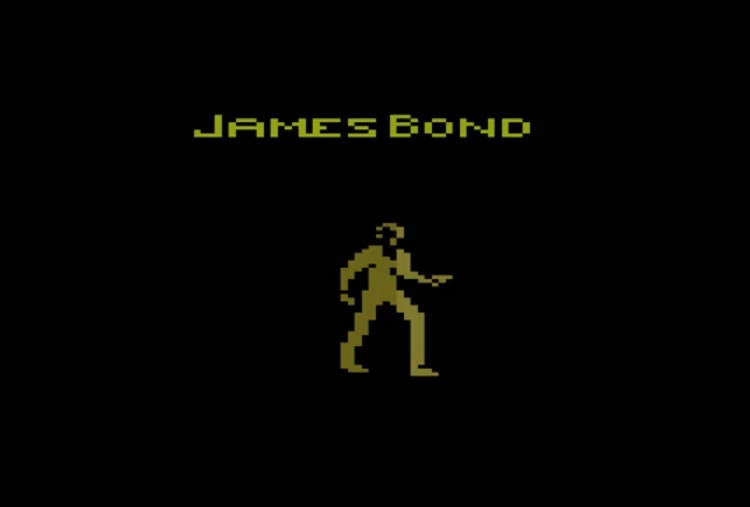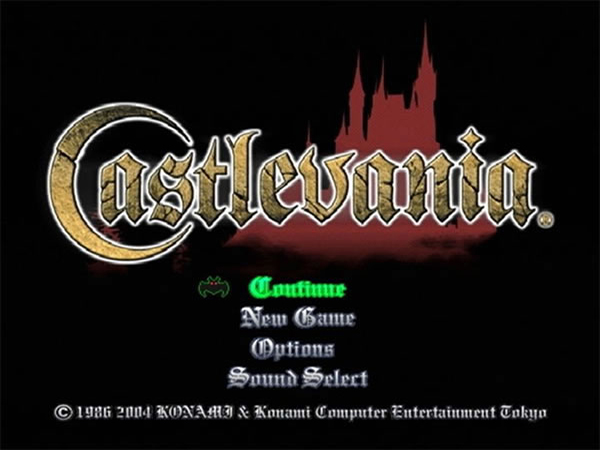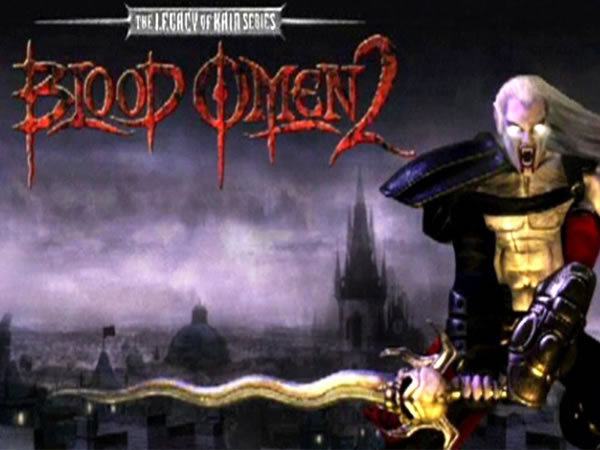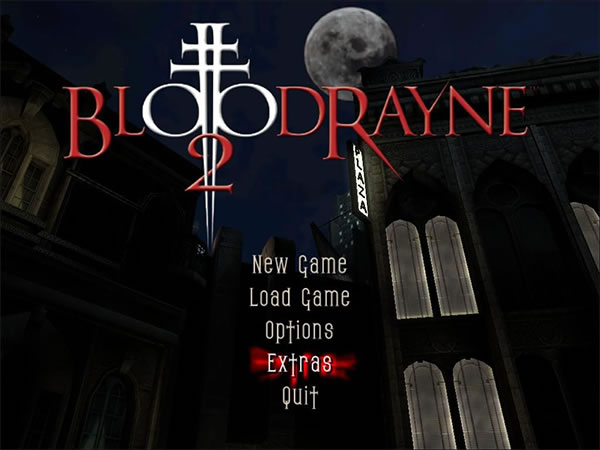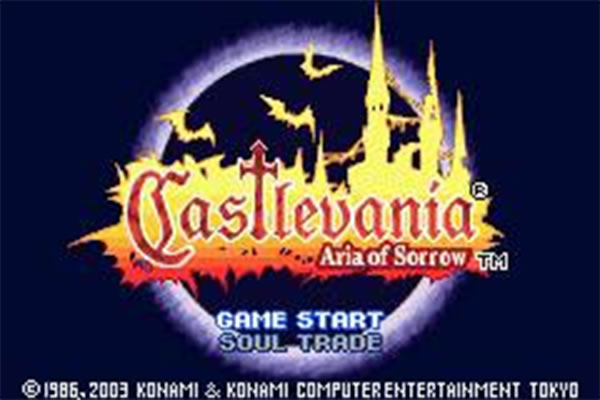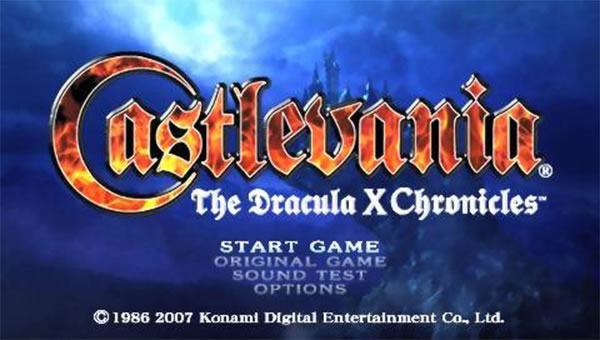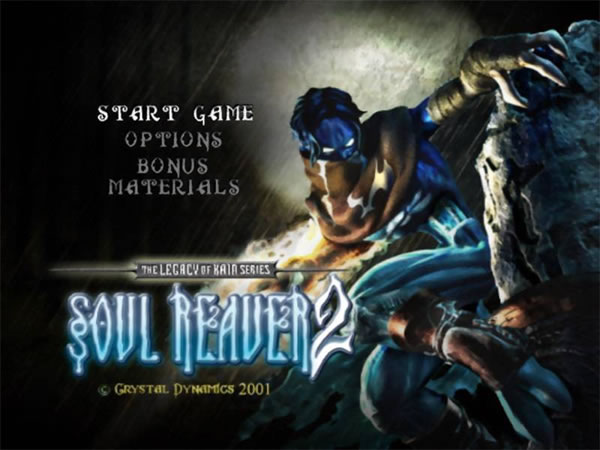- CLASSIC MAGAZINES
- REVIEW CREW
A show recapping what critics thought back
when classic games first came out! - NEXT GENERATION'S BEST & WORST
From the worst 1-star reviews to the best
5-stars can offer, this is Next Generation! - NINTENDO POWER (ARCHIVE)
Experience a variety of shows looking at the
often baffling history of Nintendo Power! - MAGAZINE RETROSPECTIVE
We're looking at the absolutely true history of
some of the most iconic game magazines ever! - SUPER PLAY'S TOP 600
The longest and most ambitious Super NES
countdown on the internet! - THEY SAID WHAT?
Debunking predictions and gossip found
in classic video game magazines! - NEXT GENERATION UNCOVERED
Cyril is back in this spin-off series, featuring the
cover critic review the art of Next Generation! - HARDCORE GAMER MAGAZING (PDF ISSUES)
Download all 36 issues of Hardcore Gamer
Magazine and relive the fun in PDF form!
- REVIEW CREW
- ELECTRONIC GAMING MONTHLY
- ELECTRONIC GAMING MONTHLY RANKS
From Mario to Sonic to Street Fighter, EGM
ranks classic game franchises and consoles! - ELECTRONIC GAMING MONTHLY BEST & WORST
Counting down EGM’s best and worst reviews
going year by year, from 1989 – 2009! - ELECTRONIC GAMING BEST & WORST AWARDS
11-part video series chronicling the ups and
downs of EGM’s Best & Worst Awards!
- ELECTRONIC GAMING MONTHLY RANKS
- GAME HISTORY
- GAME OVER: STORY BREAKDOWNS
Long-running series breaking down game
stories and analyzing their endings! - A BRIEF HISTORY OF GAMING w/ [NAME HERE]
Real history presented in a fun and pithy
format from a variety of game historians! - THE BLACK SHEEP
A series looking back at the black sheep
entries in popular game franchises! - INSTANT EXPERT
Everything you could possibly want to know
about a wide variety of gaming topics! - FREEZE FRAME
When something familiar happens in the games
industry, we're there to take a picture! - I'VE GOT YOUR NUMBER
Learn real video game history through a series
of number-themed episodes, starting at zero! - GREAT MOMENTS IN BAD ACTING
A joyous celebration of some of gaming's
absolute worst voice acting!
- GAME OVER: STORY BREAKDOWNS
- POPULAR SHOWS
- DG NEWS w/ LORNE RISELEY
Newsman Lorne Riseley hosts a regular
series looking at the hottest gaming news! - REVIEW REWIND
Cyril replays a game he reviewed 10+ years
ago to see if he got it right or wrong! - ON-RUNNING FEUDS
Defunct Games' longest-running show, with
editorials, observations and other fun oddities! - DEFUNCT GAMES QUIZ (ARCHIVE)
From online quizzes to game shows, we're
putting your video game knowledge to the test!- QUIZ: ONLINE PASS
Take a weekly quiz to see how well you know
the news and current gaming events! - QUIZ: KNOW THE GAME
One-on-one quiz show where contestants
find out if they actually know classic games! - QUIZ: THE LEADERBOARD
Can you guess the game based on the classic
review? Find out with The Leaderboard!
- QUIZ: ONLINE PASS
- DEFUNCT GAMES VS.
Cyril and the Defunct Games staff isn't afraid
to choose their favorite games and more! - CYRIL READS WORLDS OF POWER
Defunct Games recreates classic game
novelizations through the audio book format!
- DG NEWS w/ LORNE RISELEY
- COMEDY
- GAME EXPECTANCY
How long will your favorite hero live? We crunch
the numbers in this series about dying! - VIDEO GAME ADVICE
Famous game characters answer real personal
advice questions with a humorous slant! - FAKE GAMES: GUERILLA SCRAPBOOK
A long-running series about fake games and
the people who love them (covers included)! - WORST GAME EVER
A contest that attempts to create the worst
video game ever made, complete with covers! - LEVEL 1 STORIES
Literature based on the first stages of some
of your favorite classic video games! - THE COVER CRITIC
One of Defunct Games' earliest shows, Cover
Critic digs up some of the worst box art ever! - COMMERCIAL BREAK
Take a trip through some of the best and
worst video game advertisements of all time! - COMIC BOOK MODS
You've never seen comics like this before.
A curious mix of rewritten video game comics!
- GAME EXPECTANCY
- SERIES ARCHIVE
- NINTENDO SWITCH ONLINE ARCHIVE
A regularly-updated list of every Nintendo
Switch Online release, plus links to review! - PLAYSTATION PLUS CLASSIC ARCHIVE
A comprehensive list of every PlayStation
Plus classic release, including links! - RETRO-BIT PUBLISHING ARCHIVE
A regularly-updated list of every Retro-Bit
game released! - REVIEW MARATHONS w/ ADAM WALLACE
Join critic Adam Wallace as he takes us on a
classic review marathon with different themes!- DEFUNCT GAMES GOLF CLUB
Adam Wallace takes to the links to slice his way
through 72 classic golf game reviews! - 007 IN PIXELS
Adam Wallace takes on the world's greatest spy
as he reviews 15 weeks of James Bond games! - A SALUTE TO VAMPIRES
Adam Wallace is sinking his teeth into a series
covering Castlevania, BloodRayne and more! - CAPCOM'S CURSE
Adam Wallace is celebrating 13 days of Halloween
with a line-up of Capcom's scariest games! - THE FALL OF SUPERMAN
Adam Wallace is a man of steel for playing
some of the absolute worst Superman games! - THE 31 GAMES OF HALLOWEEN
Adam Wallace spends every day of October afraid
as he reviews some of the scariest games ever! - 12 WEEKS OF STAR TREK
Adam Wallace boldly goes where no critic has
gone before in this Star Trek marathon!
- DEFUNCT GAMES GOLF CLUB
- DAYS OF CHRISTMAS (ARCHIVE)
Annual holiday series with themed-episodes
that date all the way back to 2001!- 2015: 30 Ridiculous Retro Rumors
- 2014: 29 Magazines of Christmas
- 2013: 29 Questionable Power-Ups of Christmas
- 2012: 34 Theme Songs of Christmas
- 2011: 32 Game Endings of Christmas
- 2010: 31 Bonus Levels of Christmas
- 2009: 30 Genres of Christmas
- 2008: 29 Controls of Christmas
- 2007: 34 Cliches of Christmas
- 2006: 33 Consoles of Christmas
- 2005: 32 Articles of Christmas
- 2004: 31 Websites of Christmas
- 2003: 29 Issues of Christmas
- 2002: 28 Years of Christmas
- 2001: 33 Days of Christmas
- NINTENDO SWITCH ONLINE ARCHIVE
- REVIEW ARCHIVE
- FULL ARCHIVE
Treasure Master
You would think that having fun playing a video game would be prize enough for most people. But in 1993, American Softworks decided to up the ante by giving away more than 36,000 prizes. The result was Treasure Master, a 2D platformer with big ambitions and an MTV sponsorship. Unfortunately, not even winning the $10,000 prize package is enough to make Treasure Master worth playing.
You play Skooter (or, if you're paying attention to the advertising, Scooter), a young boy who is off on a large scavenger hunter. After finding a mysterious foreign coin, Skooter learns about the "Legend of the Treasure Master." As it turns out, there's a large prize out there for the taking, and this is just the hero to finally tackle this centuries-old challenge.
What sets Treasure Master apart from Super Mario Bros. and other platformers of the era is its use of a large open world. Each level takes place in a large environment that go up and down multiple screens. In the first level alone you can climb high above the ground or swim with the sharks below the surface. You'll have to explore every inch of these stages for hidden treasure and items that will aid you on your quest for the ultimate prize.
Through six large stages, Treasure Master has you dodging enemies and picking up useful items. Don't let the deceptively normal surroundings of the first stage fool you, Skooter's adventure is going to take him all over the world ... and beyond. In fact, the second stage sees our hero blast off into space and look for hidden treasure on the moon. Other stages seem to be built around tools and carnivals, making for an incredibly random mishmash of stage designs.
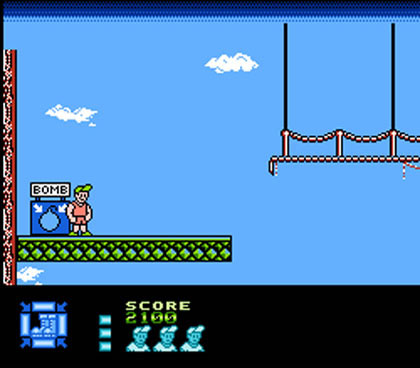
No matter where you are, your goal is to pick up as many items as you can. Sometimes you'll pilot vehicles, other times you'll find these objects just from walking around. Scissors, bombs, weights, arrows, lasers, keys and other helpful items are tucked away in hard to reach locations. You'll spend much of the adventure simply searching every nook and cranny for something useful.
Unfortunately, it's not always clear when and where you're supposed to use each of these items. Usually this results in you aimlessly walking around trying to figure out what to do next. However, some of the game's trial and error can result in some frustrating and unfair deaths. One early situation has you jumping several screens into the air, only to hit a ceiling of spikes. There's no way to avoid this obstacle and all it takes is one hit and you're toast. The solution is to wear the hardhat, but if you haven't already found that object you will spend the rest of your lives thinking it's a platforming puzzle.
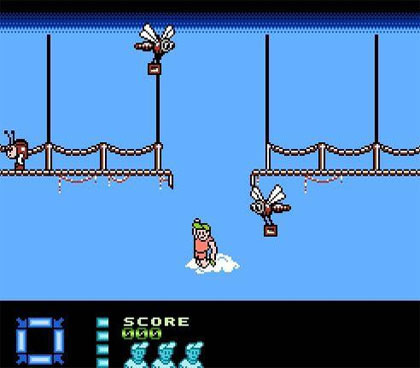
A lot of these frustrating deaths could have been resolved with the simple placement of a sign. Warn me that there's a section that requires a hardhat, that way I know what it is I'm supposed to be looking for. But no, the game doesn't want you to know, it expects you to play through these levels so many times that you'll eventually figure it out.
The only way I envision Treasure Master being fun is if you truly believe there's a $10,000 prize at the end of the ordeal. That's just about the only way you can justify the poor visuals, frustrating difficulty and bad gameplay. Without that, you're left with a sub-par action game with nonsensical puzzles. This isn't a teaching tool, it's a torture devise. No matter how old it is, a game shouldn't have to bribe you to have fun.
You play Skooter (or, if you're paying attention to the advertising, Scooter), a young boy who is off on a large scavenger hunter. After finding a mysterious foreign coin, Skooter learns about the "Legend of the Treasure Master." As it turns out, there's a large prize out there for the taking, and this is just the hero to finally tackle this centuries-old challenge.
What sets Treasure Master apart from Super Mario Bros. and other platformers of the era is its use of a large open world. Each level takes place in a large environment that go up and down multiple screens. In the first level alone you can climb high above the ground or swim with the sharks below the surface. You'll have to explore every inch of these stages for hidden treasure and items that will aid you on your quest for the ultimate prize.
Through six large stages, Treasure Master has you dodging enemies and picking up useful items. Don't let the deceptively normal surroundings of the first stage fool you, Skooter's adventure is going to take him all over the world ... and beyond. In fact, the second stage sees our hero blast off into space and look for hidden treasure on the moon. Other stages seem to be built around tools and carnivals, making for an incredibly random mishmash of stage designs.

No matter where you are, your goal is to pick up as many items as you can. Sometimes you'll pilot vehicles, other times you'll find these objects just from walking around. Scissors, bombs, weights, arrows, lasers, keys and other helpful items are tucked away in hard to reach locations. You'll spend much of the adventure simply searching every nook and cranny for something useful.
Unfortunately, it's not always clear when and where you're supposed to use each of these items. Usually this results in you aimlessly walking around trying to figure out what to do next. However, some of the game's trial and error can result in some frustrating and unfair deaths. One early situation has you jumping several screens into the air, only to hit a ceiling of spikes. There's no way to avoid this obstacle and all it takes is one hit and you're toast. The solution is to wear the hardhat, but if you haven't already found that object you will spend the rest of your lives thinking it's a platforming puzzle.

A lot of these frustrating deaths could have been resolved with the simple placement of a sign. Warn me that there's a section that requires a hardhat, that way I know what it is I'm supposed to be looking for. But no, the game doesn't want you to know, it expects you to play through these levels so many times that you'll eventually figure it out.
The only way I envision Treasure Master being fun is if you truly believe there's a $10,000 prize at the end of the ordeal. That's just about the only way you can justify the poor visuals, frustrating difficulty and bad gameplay. Without that, you're left with a sub-par action game with nonsensical puzzles. This isn't a teaching tool, it's a torture devise. No matter how old it is, a game shouldn't have to bribe you to have fun.
HOME |
CONTACT |
NOW HIRING |
WHAT IS DEFUNCT GAMES? |
NINTENDO SWITCH ONLINE |
RETRO-BIT PUBLISHING
Retro-Bit |
Switch Planet |
The Halcyon Show |
Same Name, Different Game |
Dragnix |
Press the Buttons
Game Zone Online | Hardcore Gamer | The Dreamcast Junkyard | Video Game Blogger
Dr Strife | Games For Lunch | Mondo Cool Cast | Boxed Pixels | Sega CD Universe | Gaming Trend
Game Zone Online | Hardcore Gamer | The Dreamcast Junkyard | Video Game Blogger
Dr Strife | Games For Lunch | Mondo Cool Cast | Boxed Pixels | Sega CD Universe | Gaming Trend
Copyright © 2001-2025 Defunct Games
All rights reserved. All trademarks are properties of their respective owners.
All rights reserved. All trademarks are properties of their respective owners.







